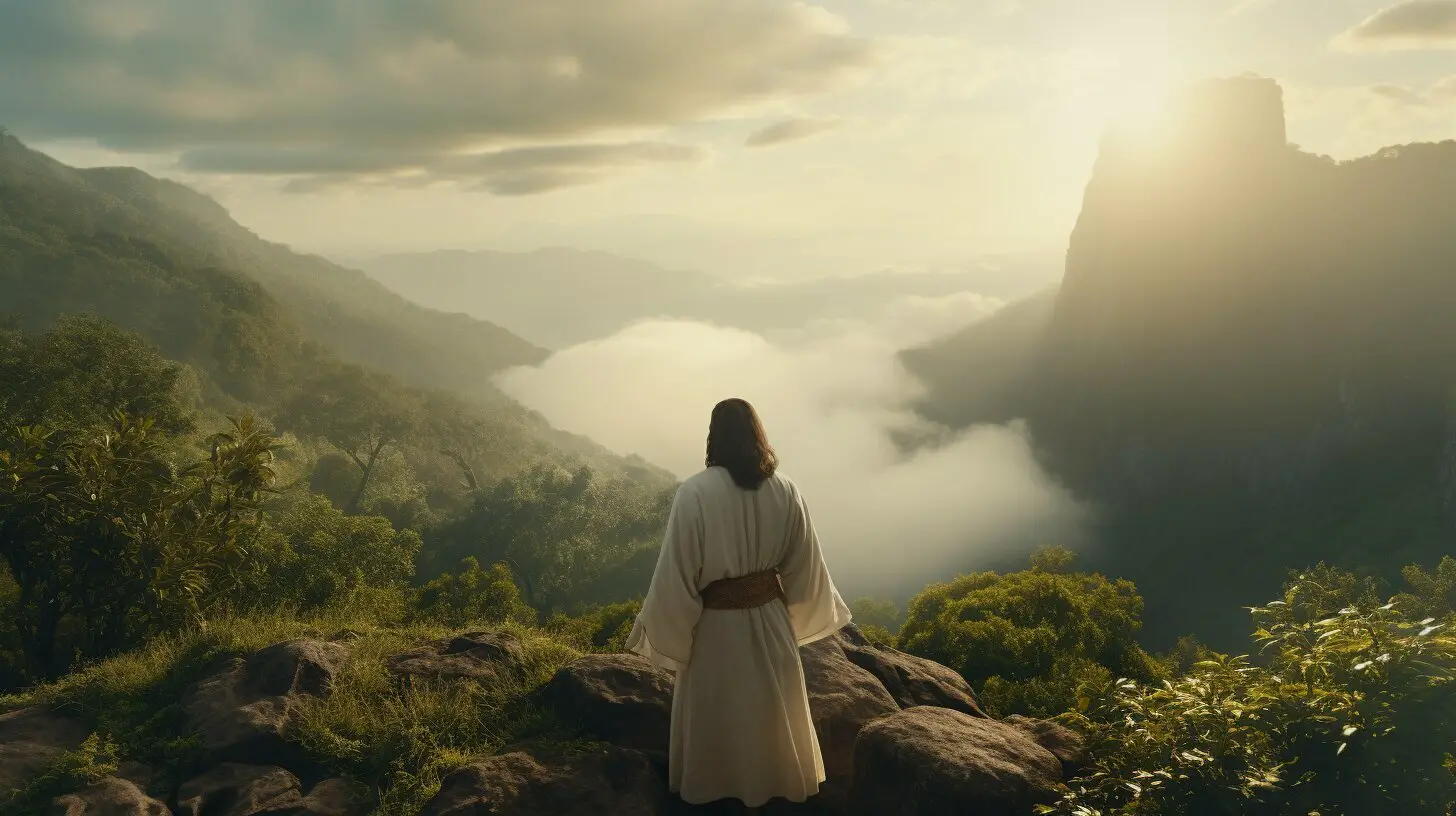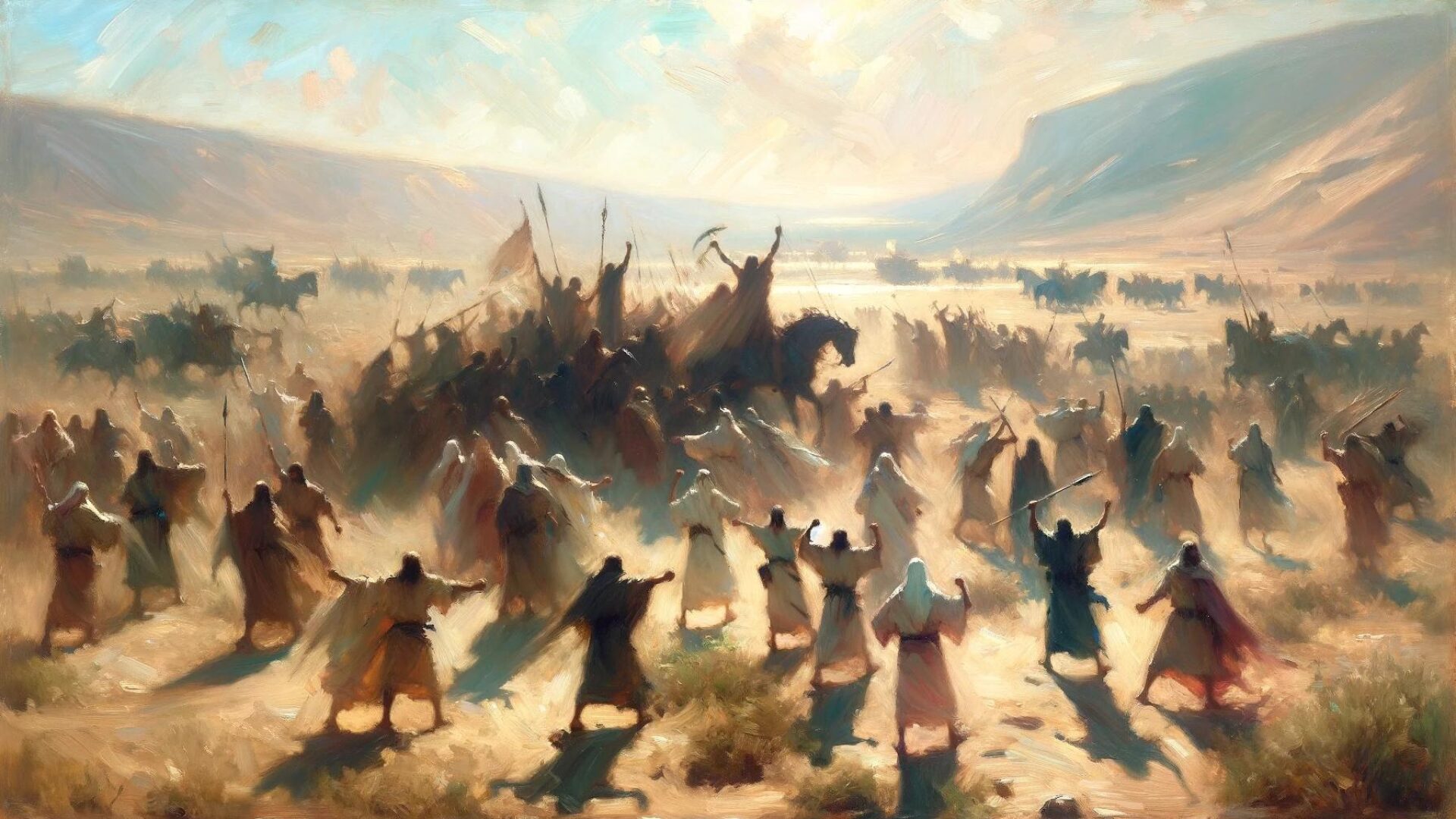The transfiguration of Jesus is one of the most significant events in the New Testament, depicting a miraculous transformation of Jesus’ physical appearance in the presence of his disciples. However, the timing of this event has been a subject of debate and speculation among scholars and theologians for centuries.
When did the transfiguration of Jesus take place? Despite the lack of a definitive answer, multiple theories have emerged regarding the potential timing of this event. In this article, we will explore the historical, biblical, and scholarly perspectives on this topic, analyzing the different factors that may have influenced the timing of the transfiguration.
Key Takeaways:
- The transfiguration of Jesus remains a mystery in terms of its exact timing.
- Multiple theories have been proposed by scholars and theologians regarding the potential date of the transfiguration.
- The historical and cultural significance of the transfiguration event has had a profound impact on the development of Christianity.
Understanding the Context of the Transfiguration
The transfiguration of Jesus is a significant event in Christian theology that is recorded in the Gospels of Matthew, Mark, and Luke. It is commonly understood as a moment where Jesus’ divinity and humanity were revealed to his disciples as he was transformed into a radiant, heavenly figure while in prayer with Peter, James, and John.
To understand the timing of the transfiguration, it is important to consider the broader context of Jesus’ ministry. The event is generally believed to have occurred after Peter’s confession of Jesus as the Messiah and before Jesus’ journey to Jerusalem where he would be crucified.
Examining Gospel Accounts and Synoptic Perspectives
The Gospel accounts provide varying perspectives on the timing of the transfiguration of Jesus. Mark’s Gospel states that the transfiguration occurred six days after Jesus foretold his death and resurrection. Matthew’s Gospel gives a similar timeline, stating that six days after Jesus made this prediction, he brought his disciples up to a high mountain and was transfigured before them. However, Luke’s Gospel states that the event occurred about eight days after Jesus foretold his death and resurrection.
These discrepancies have led scholars to offer various theories about the timing of the transfiguration. Some believe that Mark and Matthew were counting only full days, while Luke was counting partial days. Others suggest that the variation may be due to differences in the underlying sources or the intended audience of the Gospel writers.
Despite these differences, all three Gospels agree on the basic details of the event itself. Jesus took Peter, James, and John up a mountain, where he was transfigured before them, his clothes becoming dazzlingly white and his face shining like the sun. The disciples also saw Moses and Elijah conversing with Jesus, and heard a voice from heaven affirming Jesus as God’s beloved Son.
Comparing the Synoptic Gospels
When comparing the synoptic Gospels of Matthew, Mark, and Luke, it becomes clear that Mark’s Gospel was used as a source for both Matthew and Luke. For the most part, Matthew follows Mark’s account, but offers more vivid details. Luke, on the other hand, adds his own insights and details to the story. For instance, Luke adds that Jesus went up the mountain to pray, and that the transfiguration took place while he was praying. Additionally, Luke emphasizes the glory of Jesus’ face and adds that the disciples were heavy with sleep, but were awakened by the appearance of Moses and Elijah.
The differences in timing may be explained by the fact that Luke’s Gospel is not as concerned with exact dates as Mark and Matthew’s Gospels. Luke has a broader timeline, focusing more on the overall significance of Jesus’ ministry rather than specific details. Therefore, it is possible that Luke was more concerned with the spiritual significance of the transfiguration moment, rather than the exact timing of the event.
“Clearly, the various Gospel accounts of the transfiguration offer differing perspectives on its timing. However, they all serve to highlight the spiritual significance of the event, affirming Jesus as the Son of God and underscoring the importance of prayer and faith.”
Scholars’ Perspectives and Theories
The date of the transfiguration of Jesus has been a topic of debate and speculation among scholars for centuries.
Some scholars contend that the transfiguration took place shortly after Peter’s confession of Jesus as the Messiah, while others argue that it occurred closer to Jesus’ death and resurrection.
| Theories | Arguments |
|---|---|
| Pre-death theory | Supporters of this theory believe that the transfiguration took place before Jesus’ death and resurrection. They argue that the event was a foretelling of Jesus’ glorification after his death. |
| Post-death theory | Advocates of this theory argue that the transfiguration occurred after Jesus’ death and resurrection. They contend that the event was a sign of Jesus’ triumph over death and a foretelling of his second coming. |
| Symbolic theory | Some scholars propose that the transfiguration was a symbolic event that did not actually happen. Instead, they suggest that the story was created to convey spiritual truths and reinforce the belief in Jesus as the Son of God. |
Despite the differing views, most scholars agree that the transfiguration was a significant event in the life of Jesus and played an important role in the development of Christian theology.
Alternative Interpretations and Influencing Factors
In addition to the theories surrounding the timing of the transfiguration, there are also alternative interpretations of the event’s date.
Some scholars believe that the transfiguration may have occurred during the Jewish festival of Sukkot, also known as the Feast of Tabernacles. This festival commemorates the Israelites’ journey through the wilderness and celebrates God’s provision and protection. The transfiguration could be seen as a manifestation of God’s glory and presence during this significant festival.
Others suggest that the transfiguration may have been influenced by the Jewish tradition of Elijah’s ascent to heaven, which was celebrated during the month of Tishrei. This tradition may have provided a cultural and symbolic context for the transfiguration event.
In conclusion, while the exact date of the transfiguration of Jesus may remain a mystery, the event’s significance and impact on Christian theology cannot be denied. As scholars continue to debate and explore the various theories and interpretations surrounding this event, its message of divine revelation and glory remains as relevant and powerful as ever.
Historical and Cultural Significance
The transfiguration of Jesus has significant historical and cultural implications in the development of Christianity. It is considered a pivotal event in the life of Jesus, as it confirms his divine nature and sets the stage for his impending crucifixion and resurrection.
Furthermore, the transfiguration serves as a bridge between the Old and New Testaments, as it features both Moses and Elijah, representing the Law and the Prophets respectively. This symbolism reinforces the idea that Jesus is the fulfillment of scripture and the Messiah prophesied in the Old Testament.
From a theological standpoint, the transfiguration has also had a profound impact on Christian beliefs and practices. It demonstrates the Trinity, with God the Father speaking from the cloud, the Son Jesus Christ transfigured before the disciples, and the Holy Spirit represented by the overshadowing cloud. This reinforces the idea of God as a triune being and serves as evidence for the doctrine of the Trinity.
The feast of the transfiguration, celebrated on August 6th in the Western Christian church, highlights the importance of this event in Christian liturgy. It is also a significant event in Eastern Orthodoxy, where it is celebrated on the same date but with different traditions and customs.
Additional Considerations and Interpretations
While there is still debate among scholars about the precise date of the transfiguration of Jesus, there are other factors to consider beyond historical and biblical context. For example, some argue that the timing was influenced by symbolic considerations.
One interpretation is that the transfiguration occurred around the time of the Jewish festival of Sukkot, which celebrates the harvest and God’s provision during the Israelites’ journey in the wilderness. This festival involves building temporary shelters, or “booths,” to live in during the week-long celebration. Some scholars believe that the timing of the transfiguration may have been intended to link Jesus, Moses, and Elijah to the festival and symbolize the fulfillment of God’s promises to His people.
Another interpretation is that the timing of the event was influenced by astrological factors. Some scholars suggest that the reference to “six days” in the Gospel accounts may allude to the six days required for the planet Venus to make a transformational cycle in the sky. This theory suggests that the transfiguration may have occurred during a significant astronomical event, emphasizing the cosmic significance of Jesus’ transformation.
Despite these alternative interpretations, the majority of scholars still focus on the historical and biblical context when trying to determine the date of the transfiguration. However, these additional considerations offer insight into other factors that may have influenced the timing of this significant event.
Conclusion
After examining the historical and biblical context surrounding the transfiguration of Jesus and analyzing the different Gospel accounts, scholars have presented a range of theories and perspectives on when this event took place.
While there are variations in the accounts, most scholars agree that the transfiguration likely occurred around six days after Jesus predicted his own death. This timing is significant, as it occurred at a critical point in Jesus’ ministry and demonstrated his divine nature.
The transfiguration has had a lasting impact on Christianity, shaping beliefs and practices throughout history. Its significance as a pivotal moment in Jesus’ life is reflected in the attention it has received throughout the centuries.
While there may be alternative interpretations of the transfiguration event’s date and additional factors that influenced its timing, one thing is clear: the transfiguration of Jesus holds a significant place in Christian theology and will continue to be a topic of study and contemplation for years to come.





